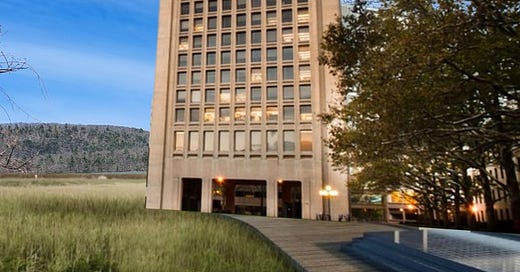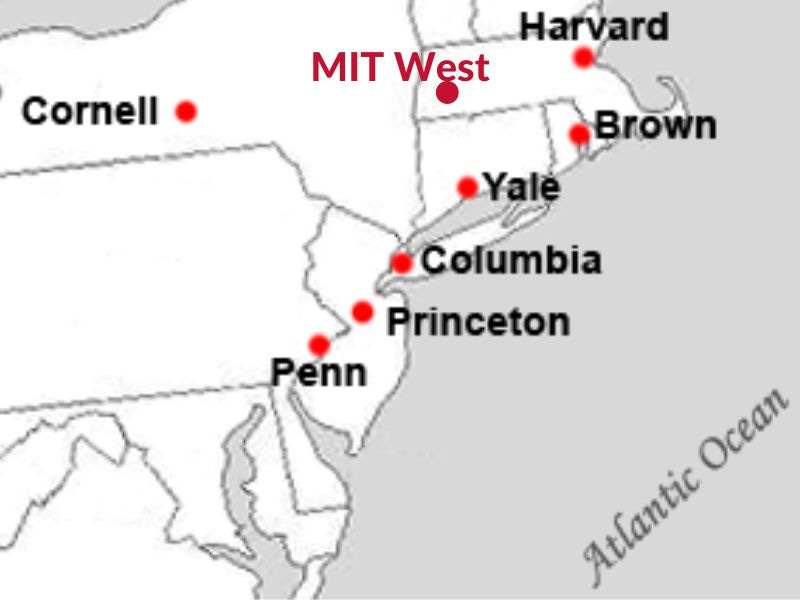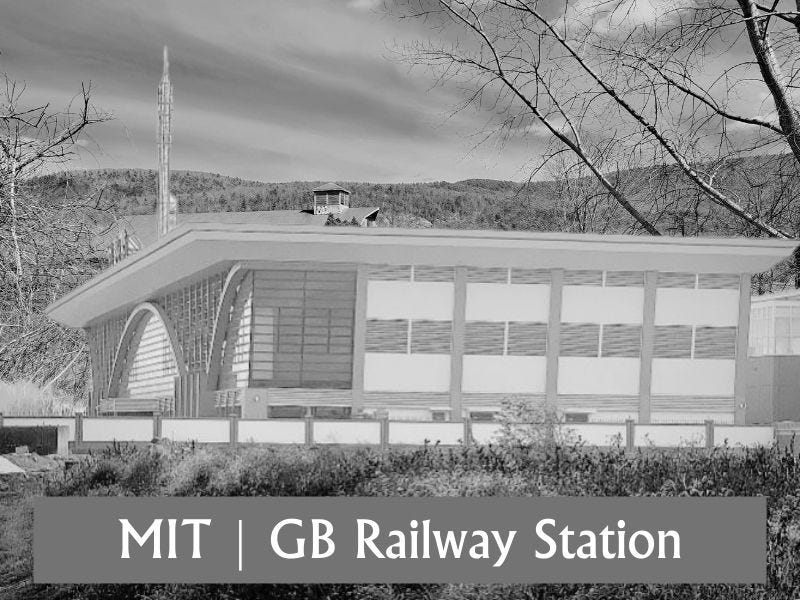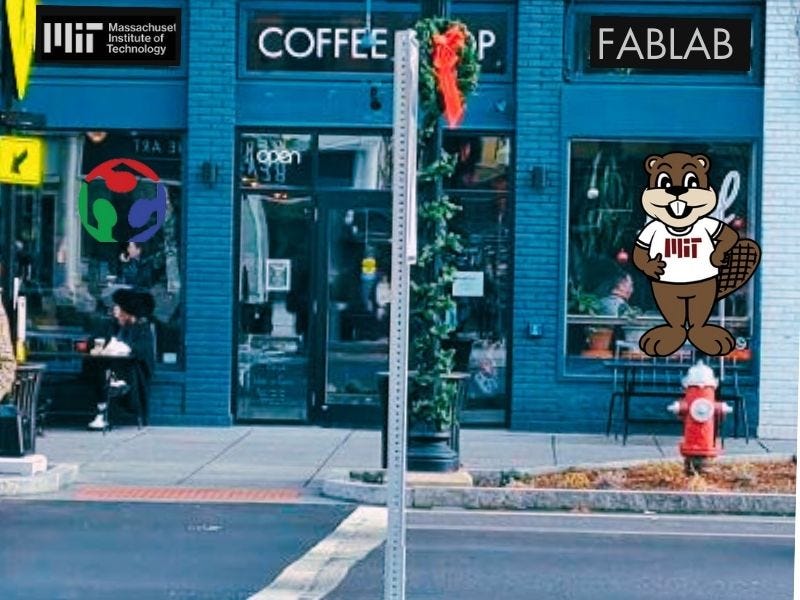MIT to build Great Barrington campus (April Fool's!)
World-renowned academic institution heads for the hills
For immediate release, 1 April 2024—The Massachusetts Institute of Technology, founded in Boston in 1861 and based in Cambridge since 1916, has announced its purchase of the 57-acre Barrington Fairgrounds where the new MIT West campus will be located. Groundbreaking is set for Summer 2025, as plans for the sprawling new campus and 3 major research centers are well underway.
The expansion was inspired by international alumnae who urged MIT to take a prominent role in climate-adaptation science and technology. This mission meant finding a location where fieldwork and experimentation could be done on site and where new models could be demonstrated.
Most of the Fairground site is designated as wetlands, unsuitable for conventional building. The new campus will be built on stilts, with expansive walkways and outdoor terraces that leave the Housatonic River ecosystem intact.
Explaining the choice of Great Barrington, a town of less than 7,000 in the southwestern corner of Massachusetts, Greeto Prettyhorse, chair of the MIT Corporation, said, “Great Barrington is equidistant from Boston and New York, and located close to the geographical center of the Ivy League. This gives us a rural, western location that will enable our new research centers to have greater national, as well as international, influence.”
A senior administrator, who asked not to be named, commented that, “with all due respect, it seems like a good time to put some distance between MIT and Harvard, our Cambridge neighbor. Applications to Harvard are falling, and we want to make sure our statistics are not impacted.”
Great Barrington is the hometown of the eminent Black African American intellectual and civil rights leader. It is also, Prettyhorse pointed out, the first town in the world to have alternating current lighting, thanks to the work of early electrical inventor William Stanley, whose workshop was located near the new campus.
As well as allowing MIT to admit more students, the new campus will permit its world-famous scientists, technologists, and architects to work together at 3 new research centers:
Extreme Weather Lab
Resilient Infrastructure Lab
Future Mobility Lab
The Extreme Weather Lab will be located at the eastern edge of the property near where a 1995 tornado struck, scarring the wooded mountainside.
The Resilient Infrastructure Lab will span the Housatonic River, focusing on new-model design for buildings, energy grids, water systems, and other infrastructure.
Lab director Bertrand Nueva said, “Upgrading to resilient systems has to happen faster and more economically. We will be using AI, examining best practice worldwide, and also studying indigenous and historic technologies to establish a new framework for the next century.”
The campus will feature buildings that echo designs from the Cambridge campus, like I M Pei’s Green Building, but built on stilts (illustrated above).
A major infrastructure program will be launched immediately in conjunction with the third research center, the Future Mobility Lab, and the support of state and federal government agencies. The long-discussed Massachusetts East-West Rail will be placed under the leadership of MIT, who intend to show California and Texas, and the world, that higher-speed rail can be completed in America.
“Trains need to go everywhere,” said Qiang Liang, director of the lab, “But this won’t happen when Amtrak bureaucrats whose thinking is still in the 1970s are in charge. The California and Texas high-speed projects are too expensive and not replicable. Our research shows that spending $100 billion to upgrade the Amtrak service along the coast between New York and Boston is not a future-focused systems approach. We made the case to government that a major new route between Boston and New York should go west and then south.
The new higher-speed line will have a stop at our new campus, where Massachusetts already owns the right-of-way and has spent $50 million on in recent years. Our major donors see resilient mobility as a major economic and social priority. With their help, we will develop models for public-private partnerships.”
MIT has assured Great Barrington officials and the business leaders that it will play a positive role, beginning with its recent purchase of the popular Fuel Coffee Shop, which will become a “third place” FabLab (illustrated below) as well as a cafe, with special programs for local students.
During negotiations and early discussions, there were concerns on both sides. Great Barrington officials first had to be told what the acronym MIT means, and to be reassured that MIT was a reputable institution.
MIT officials found that the Fairgrounds site met their criteria and was also exceptionally scenic (which had made the “Belmont in the Berkshires” horseracing track the most popular stop on the Massachusetts circuit). They were, however, concerned to find that Steve Bannon was chair of the town’s Select Board, School Board, Tree Committee, Housing Association, Cemetery Committee, and, it seemed, every other town committee.
They were assured that Mr Bannon was not the nationally known far-right figure and that his local expertise would be at the service of the new campus administration. Mr Bannon expresses relief that the scandal-ridden Fairgrounds would have new owners who would, he hoped, consider a modest donation to town funds in spite of their nonprofit status.
For further information, MIT has launched a website with full details.
Green trains at COP28 & the Infrastructure Bill
The friend who’s been doing the construction in my kitchen (oh, how that project has grown!) was telling me about his daughter’s experience at college. She’d been at school in Italy and is frustrated…











Wow - you had me. especially the map. Ken Gogel, whose law firm was in South Egremont, and sadly passed away before we had the benefits of his vision, had always pointed to our location as a prime motive for long term investment in this region. While the scale of the project is terrifying, your idea, scaled, is truly interestiing. I hope some "Easterners" take note. Happy April 1.
Fabulous creativity. After enjoying the vision, m first thought was they better build their own housing and bring in their own doctors.